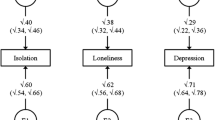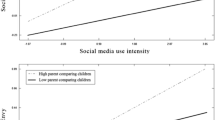Abstract
Twenty infantile autistic children, constituting what is likely to be the majority of the total population of autistic children born in the years 1962 through 1973 and living in Göteborg, Sweden, by the end of 1978, were compared with a random population sample of 59 7-year-old Göteborg children with regard to social class. Two different social classification systems were used, one that takes account only of the father's occupation and one that includes several other parameters. The distributions of social class were almost identical in the infantile autism group and in the random group. With respect to some other social circumstances the two groups were very similar. Thus, the present results lend no support for the view that autistic children tend to come from high social classes.
Similar content being viewed by others
Reference notes
Brask, B. H.A prevalence investigation of childhood psychosis. Paper presented at the 16th Scandinavian Congress of Psychiatry, 1970.
References
Gillberg, C. Maternal age and infantile autism.Journal of Autism and Developmental Disorders, 1980,10, 293–297.
Gilberg, C.Infantile autism and other childhood psychoses in a Swedish urban region. Epidemiological aspects. Journal of Child Psychology and Psychiatry, (in press).
Gillberg, C., & Rasmussen, P. Perceptual, motor and attentional deficits in seven-year-old children. Background factors.Developmental Medicine and Child Neurology, in press.
Gillberg, C., Rasmussen, P., Carlström, G., Svenson, B., & Waldenström, E., Perceptual, motor, and attentional deficits in six-year-old children. Epidemiological aspects.Journal of Child Psychology and Psychiatry, 1982, 23.
Graffar, M. Une Méthode de classification sociale d'échantilons de population. Courrier, 1956, 6.
Kanner, L. Autistic disturbances of affective contact.Nervous Child, 1943,2, 217–250.
Klackenberg, G., Karlberg, P., Klackenberg-Larsson, I., Lichtenstein, H., Stensson, J., & Svennberg, I. I: The development of children in a Swedish urban community. A prospective longitudinal study. II: The social background and its changes during the children's first three years of life.Acta Paediatrica Scandinavica Supplement, 1968,187.
Lotter, V.The prevalence of the autistic syndrome in children. Doctoral dissertation, University of London, 1967.
Rutter, M. Diagnosis and definition. In M. Rutter & E. Schopler (Eds.),Autism: A reappraisal of concepts and treatment. New York and London: Plenum Press, 1978.
Schopler, E., Andrews, C. E., & Strupp, K. Do autistic childen come from upper-middle-class parents?Journal of Autism and Developmental Disorders, 1979,9, 139–152.
Swedish Central Bureau of Statistics. Socio-economic classification, 1978 (in Swedish).
Wing, L. Childhood autism and social class: A question of selection?British Journal of Psychiatry, 1980,137, 410–417.
Author information
Authors and Affiliations
Additional information
This work has been financially supported by the Swedish Save the Children Federation (Rädda Barnens Riksförbund).
Rights and permissions
About this article
Cite this article
Gillberg, C., Schaumann, H. Social class and infantile autism. J Autism Dev Disord 12, 223–228 (1982). https://doi.org/10.1007/BF01531368
Issue Date:
DOI: https://doi.org/10.1007/BF01531368




